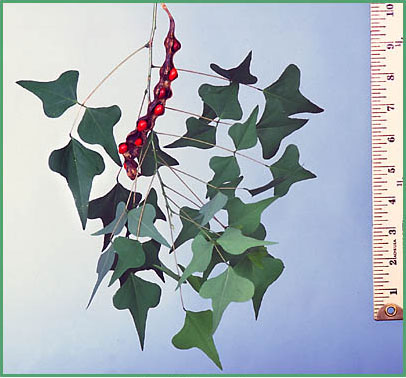Coralbean
Erythrina herbacea
Family: Fabaceae
Natural History
 Trifoliate leaves of coralbean with ripe fruit
Trifoliate leaves of coralbean with ripe fruit
Photo credit: Larry Korhnak, University of Florida
Coralbean, also called Cherokee bean or cardinal spear, is an attractive plant that is native to the southeastern United States. Its showy red , 'firecracker' blossoms and bright coral seeds make this a popular ornamental accent plant in sunny gardens. The flowers attract both butterflies and hummingbirds with their sweet nectar and conspicuous color.
The trifoliolate leaves of coralbean are heliotropic, which means that they twist and turn to change their orientation to the light, throughout the day. This allows the plants to maximize photosynthesis.
Coralbean plants contain alkaloids that are toxic when ingested. While they are generally not fatal, eating the leaves or seeds may cause severe diarrhea or vomiting.
In addition to their attraction to butterflies and hummingbirds, coralbeans are popular with other birds and small wildlife who consume the large seeds in late summer and fall.
Coralbean is found scattered along the coastal plains of the southeastern United States and Mexico. It commonly grows from northern Florida, south into the Keys.
